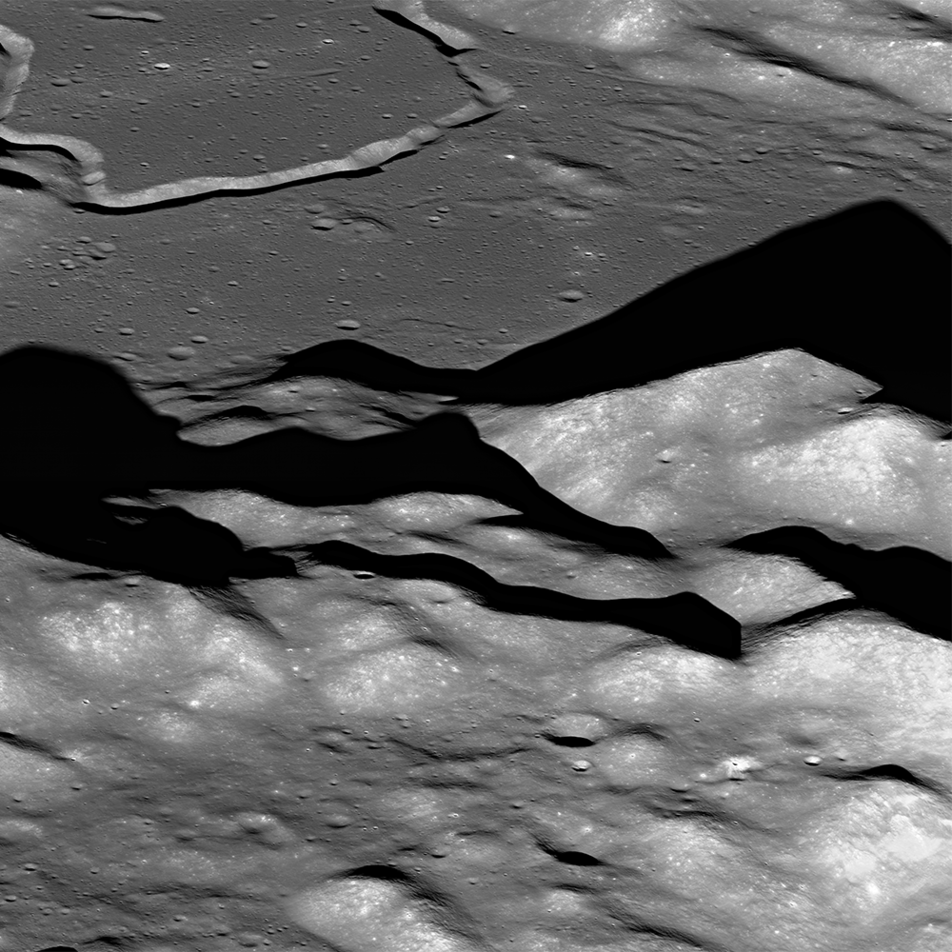Full Moon. Image: Gregory H. Revera, Wikimedia.
Life probably arose on Earth some 3.5 to 4 billion years ago, but all records of the momentous event have vanished—here on the Blue Marble, at least. Traces of our lost origin story might instead be buried on the Moon, according to new research published in the journal Astrobiology."Unlike the Earth, the Moon has been geologically quiet for billions of years, meaning there is a good chance these organic and volatile records remain relatively intact," Richard Matthewman, the study's lead author, told me.Last summer, scientists concluded that escaped chunks of Earth could have brought fossil microbes to the Moon. But whether such critters could then be preserved for eons, creating a useful archive of early Earth life, remained unknown. Now we have evidence that they can. Matthewman and colleagues discovered that organic molecules can remain intact, possibly for a very long time, if they get trapped beneath ancient lunar lava flows."This shifts the debate forward," said Mark Burchell, an independent astrobiology expert who has conducted related research. "Up until now, most attention has focused on how to get material to the Moon, or if it will survive the impact when it hits the Moon. They are now asking the next question: Suppose it did arrive, will it survive its time on the Moon?"The Earth's oldest fossils date back 3.5 billion years, but the very first cells and prebiotic molecules may have emerged a full half billion years earlier. Unfortunately, Earth's geologic record only stretches back about 3.8 billion years. Everything that occurred earlier has been overwritten by the recycling process of plate tectonics. This makes it extremely difficult to pin down exactly when, or how, the very first organic molecules began coalescing into cells.Lucky for us, the time frame for life's emergence also corresponds with the Late Heavy Bombardment—a period during which Earth was being pummeled with asteroids, and large chunks of terrestrial material were slung into space. If enough fragments of Earth rained down on the lunar surface during this time, ancient life could have hitched a ride, as well.Now, Matthewman and his coauthors are interested in whether organic compounds that made the trip from Earth to the moon during the Late Heavy Bombardment could actually have been successfully preserved. While some aspects of the lunar environment are highly conducive to organic preservation—it's bone dry, and it's a vacuum—constant exposure to the solar wind and cosmic radiation can shred fragile organics."What we need is a way to bury the meteorite containing the organic molecules to protect it from the harsh surface environment," Matthewman explained. "We think a lava flow might be a good way to do that."Volcanic eruptions were a common occurrence on the Moon until approximately 3.1 billion years ago. As lava flowed and rapidly cooled over the Moon's ancient surface, transplanted Earth rocks would have been buried in place and effectively sheltered."If it were covered soon after arrival the [organic] material would be shielded to an extent," said Burchell. "But, this introduces a new hazard, namely the heat it is exposed to." To test whether burial-by-Moon-lava could preserve life rather than cooking it, Matthewman and colleagues heated a range simple organic compounds and complex polymers up to 700 degrees Celsius in a vacuum. They did so in the presence and absence of JCS-1, a synthetic mixture of minerals intended to mimic regolith, the moon's fluffy surface material.In the absence of lunar minerals, organic materials quickly burnt to a crisp. However, when lunar minerals were present, many organic compounds were able to survive high heat. The results suggest that prebiotic compounds, perhaps even early cells, can weather the brief but intense heat of a lunar lava flow long enough to become trapped and preserved."This is the first time the lava flow preservation mechanism has been tested, " Matthewman told me. Now, having demonstrated that it can work, Matthewman is excited about what a fossil discovery on the Moon might reveal."Potentially, if we found a whole series of lava flows and preserved lunar regolith layers with terrestrial meteorites inside, we could use radiometric dating to find out how old the layers are, and look at the meteorites to try and spot the first appearance of recognizable life," he said.While we'd be very lucky to find such a record, any ancient organic compounds we do locate on the Moon at all could provide insight into the chemical evolution of early Earth, and help us fill in the long gap between the first organic molecules and the first living systems.If there's one thing that's made clear in all this, it's that it's high time we started hunting for Moon fossils.
To test whether burial-by-Moon-lava could preserve life rather than cooking it, Matthewman and colleagues heated a range simple organic compounds and complex polymers up to 700 degrees Celsius in a vacuum. They did so in the presence and absence of JCS-1, a synthetic mixture of minerals intended to mimic regolith, the moon's fluffy surface material.In the absence of lunar minerals, organic materials quickly burnt to a crisp. However, when lunar minerals were present, many organic compounds were able to survive high heat. The results suggest that prebiotic compounds, perhaps even early cells, can weather the brief but intense heat of a lunar lava flow long enough to become trapped and preserved."This is the first time the lava flow preservation mechanism has been tested, " Matthewman told me. Now, having demonstrated that it can work, Matthewman is excited about what a fossil discovery on the Moon might reveal."Potentially, if we found a whole series of lava flows and preserved lunar regolith layers with terrestrial meteorites inside, we could use radiometric dating to find out how old the layers are, and look at the meteorites to try and spot the first appearance of recognizable life," he said.While we'd be very lucky to find such a record, any ancient organic compounds we do locate on the Moon at all could provide insight into the chemical evolution of early Earth, and help us fill in the long gap between the first organic molecules and the first living systems.If there's one thing that's made clear in all this, it's that it's high time we started hunting for Moon fossils.
Advertisement
Advertisement
